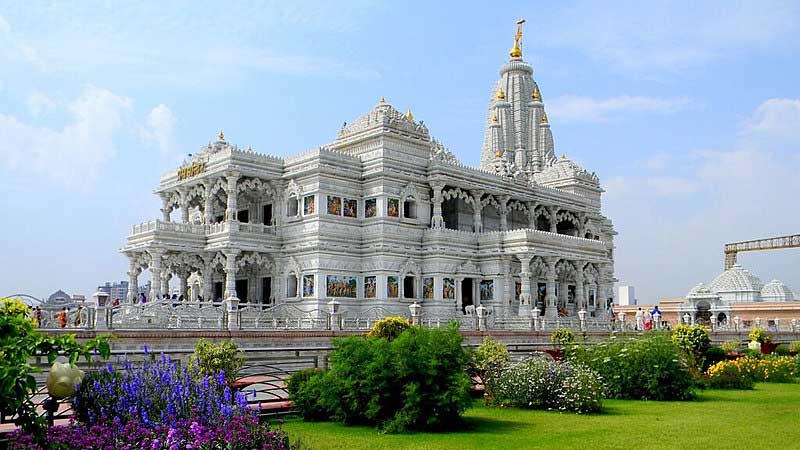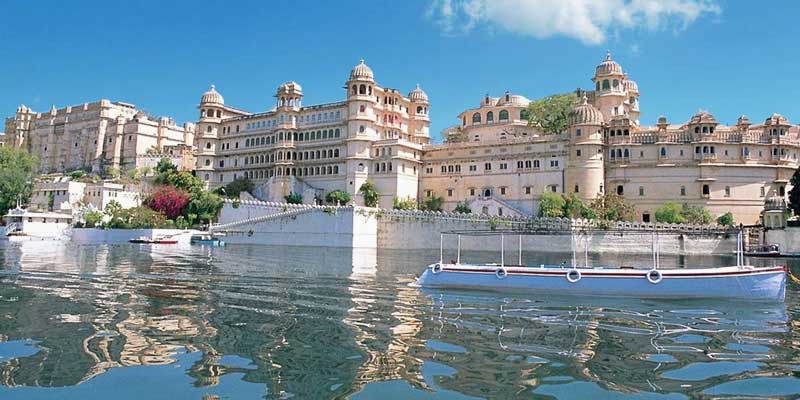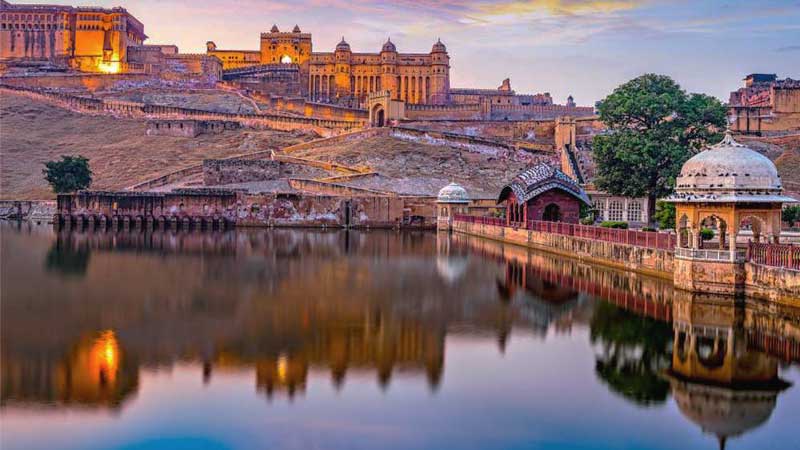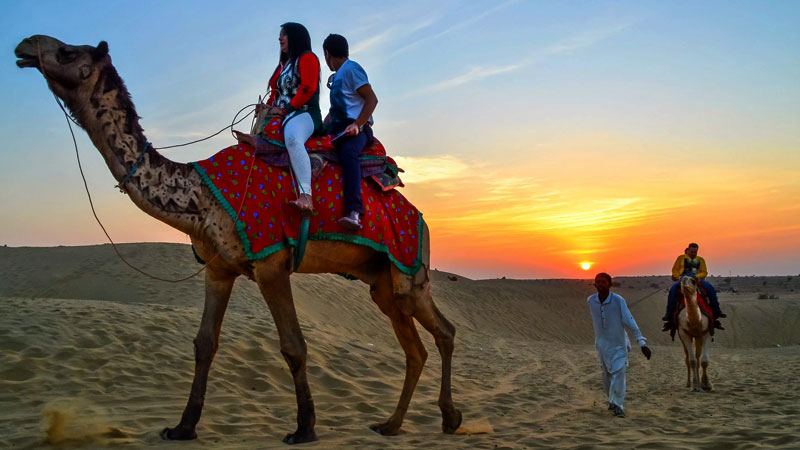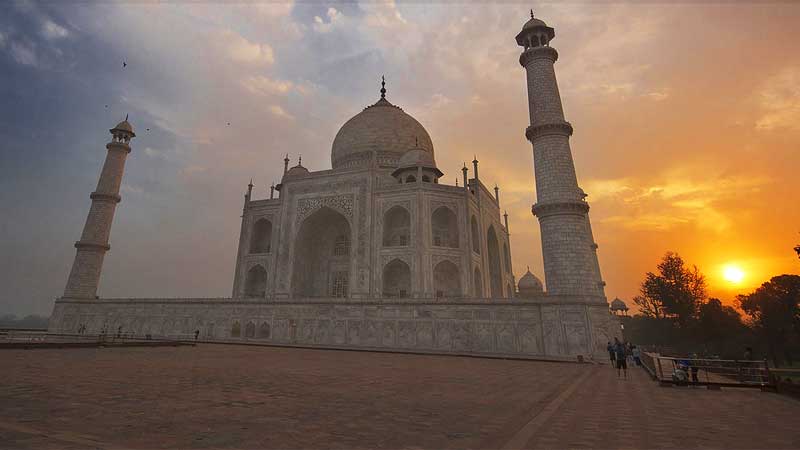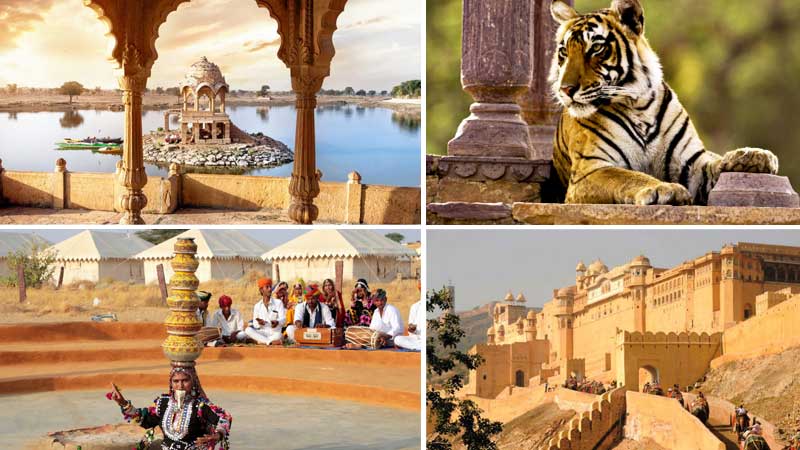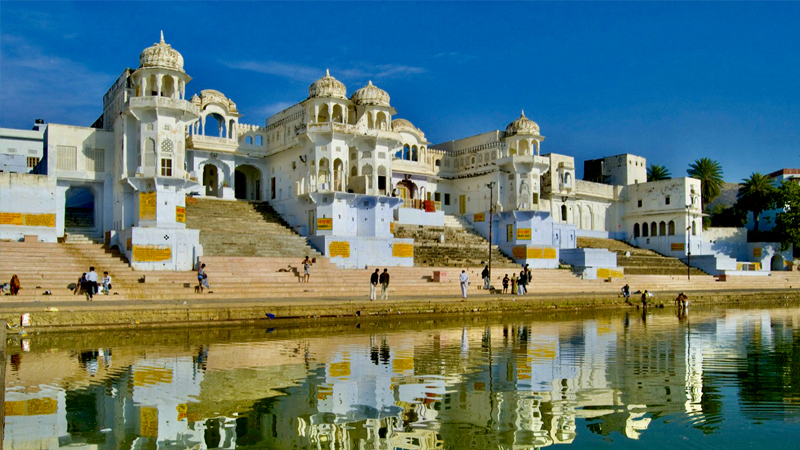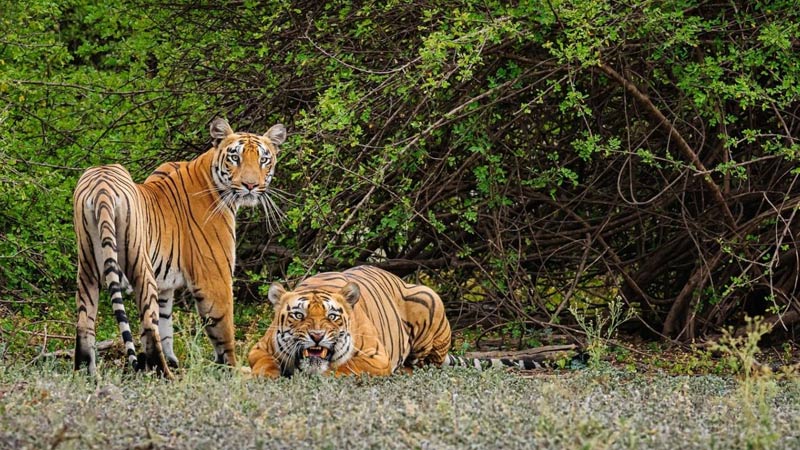Pushkar is one of the oldest cities in India. Located to the northwest of Ajmer, the tranquil city of Pushkar is a favored destination for thousands of tourists and devotees flocking to Rajasthan. Situated at a height of 510 metres, Pushkar is surrounded by hillocks on three sides. The ‘Nag Pahar’, literally meaning Snake Mountain forms a natural border between Ajmer and Pushkar. Known as ‘the rose garden of Rajasthan’, the essence of the famous Pushkar rose is exported all over the world. Along with an interesting mythological history, a legacy of timeless architectural heritage makes Pushkar a fascinating city.
According to legends, Lord Brahma, believed to be the creator of the Universe dropped a lotus to the ground leading to the immediate creation of a lake. He then decided to name the place after the flower, and thus the name, Pushkar. The city of Pushkar is home to the only temple dedicated to Lord Brahma in the whole world. Hindus consider a journey to Pushkar to be the ultimate pilgrimage that must be undertaken to attain salvation.
Pushkar Lake
According to Hindu scriptures, the sacred Pushkar Lake is described as ‘Tirtha Raj’, the king of all pilgrimage sites. No pilgrimage is considered to be complete without a dip in in the holy Pushkar Lake. Semi-circular in shape and about 8-10 metres deep, Pushkar Lake is surrounded by 52 bathing ghats and over 400 temples and is truly a magnificent sight to behold.
Brahma Temple
Jagatpita Brahma Mandir is a temple dedicated to the Hindu God of Creation, Lord Brahma and is located close to the sacred Pushkar Lake. The ancient structure is about 2000 years old, although the current structure dates to the 14th century. Pushkar has over 500 temples, some very old, but the Brahma temple is the most important among them. Legend has it that Brahma came down upon earth to perform a yajna and chose this site for his temple. In the 8th century, Hindu philosopher Adi Shankara devoted himself to renovating the temple, but the current structure is credited to Maharaja Jawat Raj of Ratlam, who repaired and slightly modified it. The inner sanctum of the temple is dedicated to Lord Brahma and his second wife, Gayatri. The temple is made of marble and stone stabs. Its red pinnacle (shikhara) can be seen from a distance and the temple has a distinct hamsa (bird) motif. On Kartik Poornima during Pushkar Fair, the town celebrates a festival dedicated to Brahma. Devout pilgrims visit the temple after bathing and cleansing themselves in the sacred Pushkar Lake. The Brahma temple has been recognized as one of the ten most religious places in the world and is considered to be one of the five sacred pilgrimage destinations for Hindus.
Savitri Temple
Dedicated to Lord Brahma's first wife, Goddess Savitri, this temple is situated on a hillock right behind the Brahma temple. While climbing the long series of steps leading to the temple, one can catch a panoramic view of the lake, surrounding temples and sand dunes. The presence of the only Brahma Temple in Pushkar is the outcome of Savitri’s curse to Brahma for marrying another Goddess, Gayatri, while starting his yagna in Pushkar.

